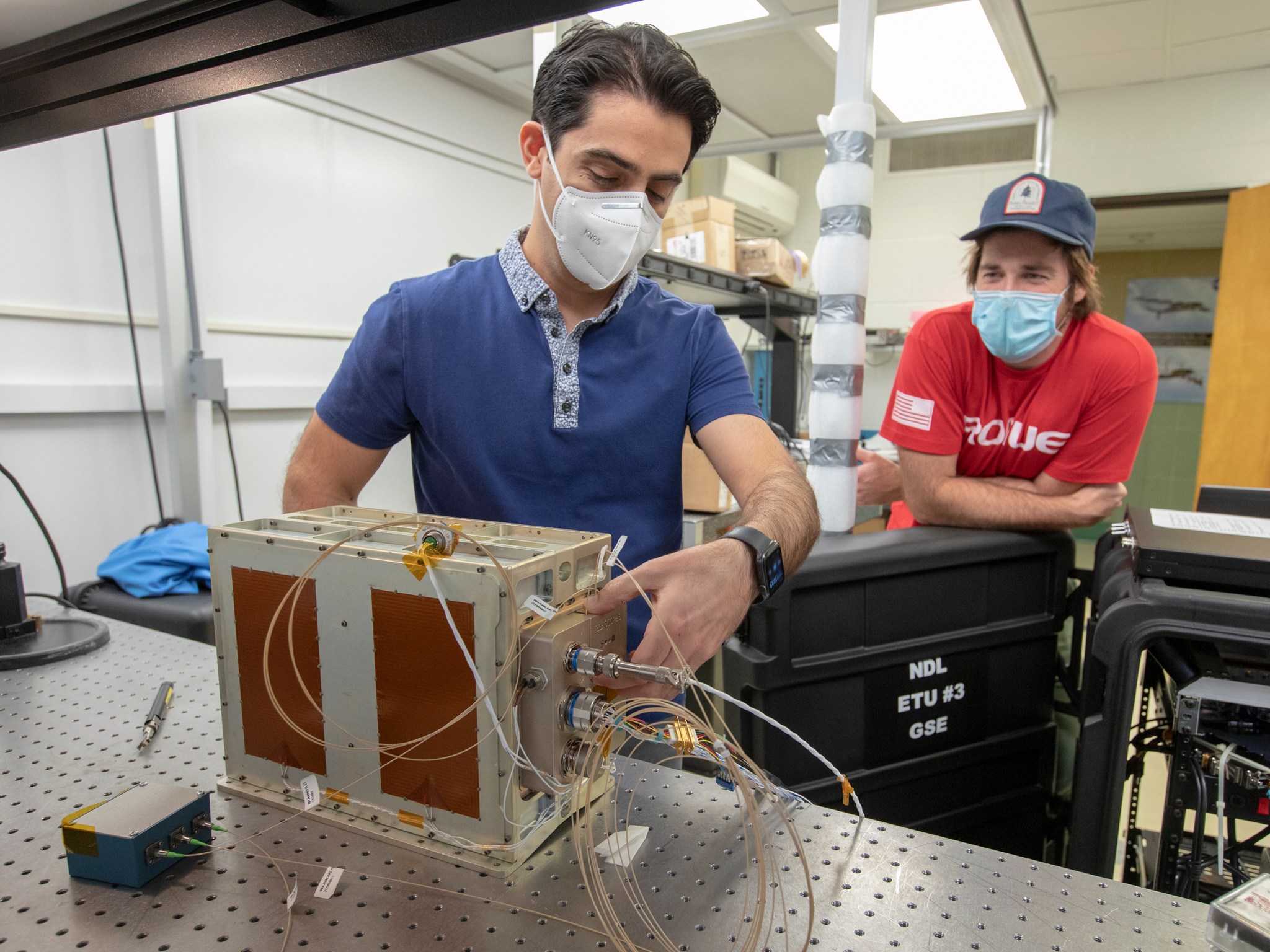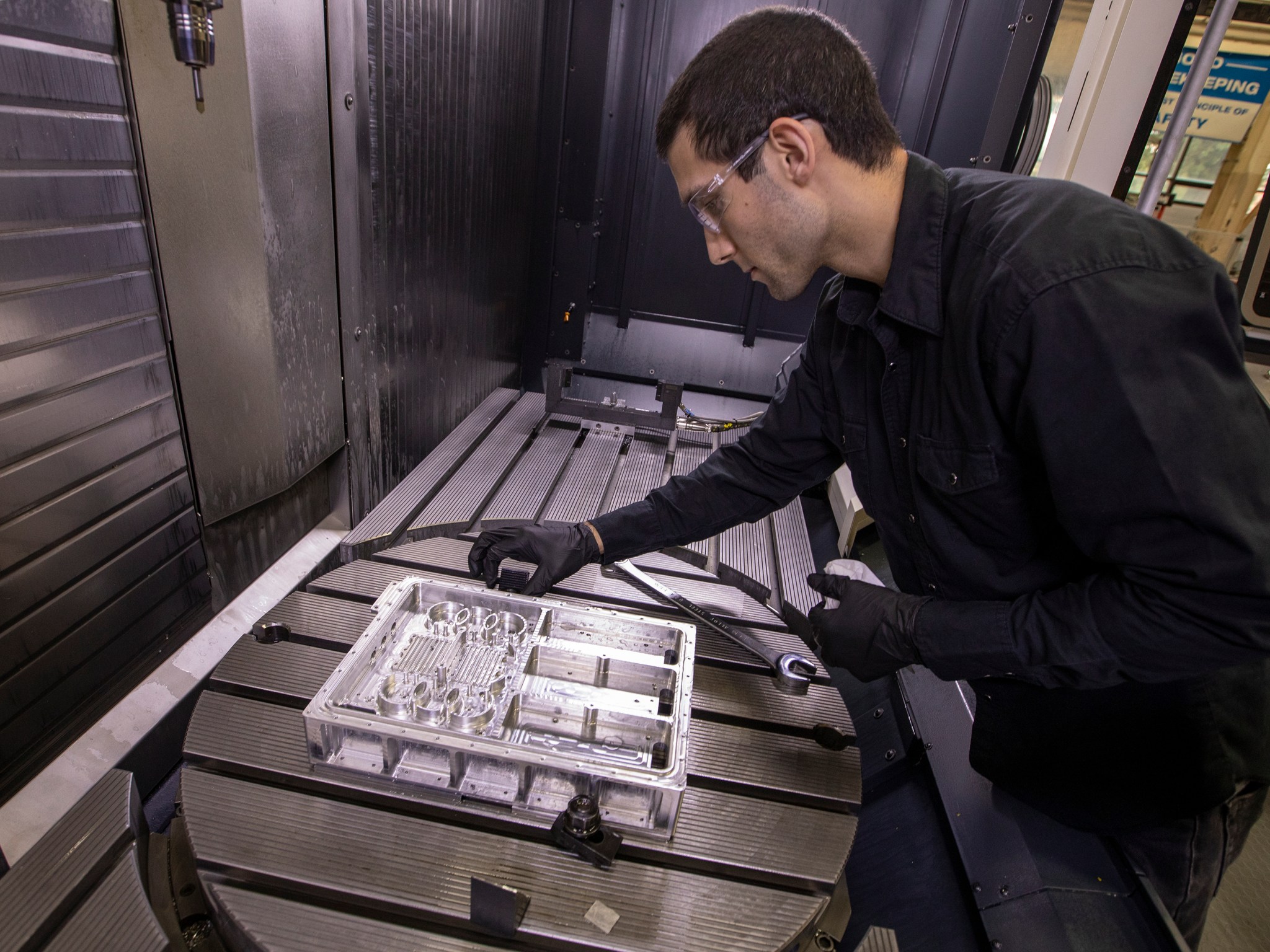Slowly, like a new spring after a long winter migration, NASA workers are returning. Individuals are assessed for their need to work onsite at NASA’s Langley Research Center, in Hampton, Virginia. While many folks remain at home, machine shops are eager to turn on the power tools again.
One of the first projects to step through the gates is Navigation Doppler Lidar (NDL). The team recently finished one NDL unit for Blue Origin, which is now working through final testing in Kent, Washington, before its launch later this year.
The fabrication work doesn’t stop there; however, since there are two more in the queue for the Commercial Lunar Payload Services (CLPS) lunar lander missions.
“NDL works with almost all of the mission directorates within NASA,” explained Mike Cisewski, NDL project manager. “This pandemic has added a whole layer of complexity to building and operating spaceflight hardware, which is fundamentally hard and complicated to do to begin with.”
Similar to newfangled cars that can parallel park themselves, NDL is an autonomous Guidance, Navigation, and Control system. During entry, descent, and landing on a planet, NDL can help future robotic explorers and astronauts navigate down to the surface. While ultimately this technology is envisioned for the Artemis and Mars missions, the CLPS missions will fly to the lunar surface and serve as a testing ground for future robotic and human missions.
The NDL fabrication team is charging full speed ahead. A few are currently on-site, but more are itching to get back to the labs and machine shops. For those who are on center, they assemble electronics for the NDL design unit while spread throughout the buildings and labs for safe social distancing.
“Times are a little strange. We’re wearing N95 masks, but at the same time we’re soldering circuit boards that will be going to the Moon,” said Jake Follman, who is an integration lead and electronics engineer for NDL. He said the electronics crew is trying to minimize contact while handing off hardware and communicating about issues.
Ultimately, the team talks daily, working well together, and learning from each other’s experiences. Follman makes sure everyone knows if they feel uncomfortable working in person, that being onsite is optional. No one is required to be on center and concerns about safety are at the forefront while moving forward.
“We have a great crew, a great team, with good spirits,” concludes Follman.
Tom Burns, branch head, and Mark Simonton, assistant branch head, work in the metals application and technology branch, affectionately known as the ‘machine shop.’ Their responsibility is to cut and deliver metal pieces for projects like NDL. In mid-July, Simonton and his crew, located in a different building than Follman, returned home while the building was sanitized after an individual working in that building tested positive for COVID-19. After an all-clear, they returned once again.
“I appreciate NASA Langley’s leadership being cautious and looking out for our health as we return to work on center,” said Burns. “When someone does test positive, they allow the machine shop to appropriately observe the two-week quarantine period.” On July 27, after observing the two-week period, a small group from the machine shop was able to return to oversee three projects including NDL.
When returning from migration, animals come in waves, and when the timing is right. Right now, researchers at NASA Langley are no different. It takes time and patience to navigate through the “new normal” of hybrid on-site and telework operations that will likely continue for some time to come.




























